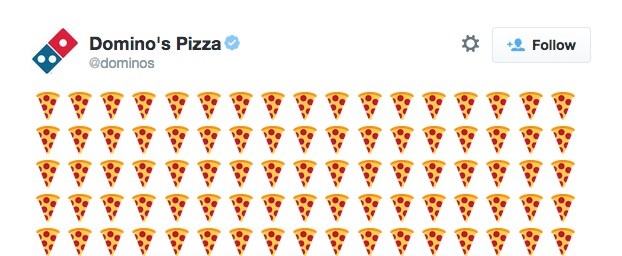Malherbe, head of client engagement at the social media research company, first looked at how the use of social media has developed since its introduction. Initially used as purely a social tool, it then evolved into a marketing tool for brands to reach people with their products - return on investment was determined by the extent of that reach. Focus then shifted to engagement, measuring likes, shares, retweets etc. The most current phase has a more practical use for business as an e-commerce platform, explained Malherbe - Domino's US tweet-to-order service is an example of this.

Social media and the internet have also rewritten the customer journey, explained Malherbe, by adding a new point in the buying cycle. Google coined the term for this additional point back in 2011 calling it the Zero Moment of Truth (ZMOT). It essentially refers to the point in the purchasing cycle when a consumer researches a product online before buying it, and this often happens before the seller knows they exist. For more on ZMOT, read "The Zero Moment of Truth: What is it and why should you care?".
ZMOT has completely changed the way things work, explained Malherbe: "People research you and your brand before you even know about them, they ask their friends about you and your brand, they form an opinion about you and your brand before you even know about them.
"What this means is that a brand is no longer what you tell people it is, it's what people tell each other it is."
This change in the customer journey has given rise to a new type of marketing: influencer marketing. Marketers select people who are popular on social media to talk about brands - this is based on the fact that people trust other people more than they would a brand.

Initially, to measure ROI in social media, marketers monitored and measured reach - with a broader understanding of how users utilise social media, it has become evident that measuring quantitative data is no longer enough. A true measure of popular sentiment requires social listening.
"Social listening can give you so much information into your business and into your competitors if you just do it well. If you do do it well, you can actually start finding out how people feel about your brand, why they feel that about your brand, and then that puts you in the prime position to be reactive when you need to be reactive and be proactive before people even know you're being proactive, and then do the cool stuff - do the unexpected," explained Malherbe.
BrandsEye specialises in sentiment analysis - analysing how people feel about brands by collecting data on social media. Why is reach and engagement alone not a good enough measurement of how well your brand is doing? 100,000 retweets do not necessarily mean positive sentiment, therefore understanding sentiment is very important in social media analysis.
"Sentiment is phenomenally difficult to work with and the reason is people don't speak in tick boxes and spread sheets - they don't speak like you want them to speak and you often have to listen to what they mean rather than what they say, and this has been phenomenally difficult to do and this is why people have stayed away from social media data because they perceive it to be inaccurate, and have perceived it to be so much data that they can't actually work with it," explained Malherbe.

While an algorithm is very good at producing quantitative data, it's found wanting as a means of analysing qualitative data. This is because people don't always say exactly what they mean - they get creative in their social media posts using tone and sarcasm. Deciphering this data requires people. BrandsEye have people reading through the data drawing conclusions on sentiment. Using this data, a brand has access to free public information about its own brand, as well as that of its competitors.
Even if a brand has achieved mostly positive sentiment, social listening allows them to delve into the areas where negative sentiments lie and turn those around. One way of driving positive sentiment on social media and beyond is to do the unexpected. Some big brands, like the Netherlands' KLM, have jumped on this opportunity.
In this example, Sean expressed on Twitter having trouble sleeping and having to get up in four hours to catch a flight. KLM decided to arrange a lullaby for Sean as part of its #HappytoHelp campaign:
"Just listening in on a conversation, using social media and just getting in on people's minds can actually make a difference to your day-to-day business," concluded Malherbe.
For more info on social listening and sentiment analysis, go to www.brandseye.com.
